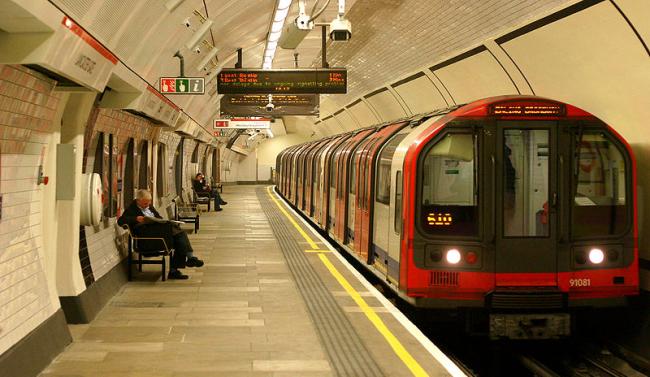There’s no doubt that the London Underground is one of the world’s great inventions.
However, 150 years after it first opened to the public, it’s becoming increasingly apparent that the tube network must continue to evolve in order to remain up-to-date with commuter demands.
I like to think I’ve seen my fair share of big and complicated security networks, but it’s incredible to think that, today, there are something like 12,000 surveillance cameras on the London Underground network. All of them silently working away, barely even noticed by the commuters who are responsible for a staggering 3.23 million journeys on that network every single day.
Different era, different set of demands
150 years ago the demands placed upon the London Underground were very different. The network was initially responsible for tens of thousands – rather than millions – of journeys each day, and all of them were across one line.
100 years ago only 20% of the world’s population lived in urban areas, but since then urban populations have boomed. Today, they’ve swollen to such an extent that, in 2010, for the first time in history more of the world’s population lived in urban areas than in rural ones.
Amazingly, or perhaps worryingly for some, this trend is expected to continue. By 2050, it’s believed that seven out of every ten people will live in an urban area. What’s more, all of them will need some means of getting around.
IP surveillance: making a difference for transport networks
Of course, there’s no simple solution to this problem. However, one technology that’s making a genuine difference to transport networks around the world is IP surveillance. Unlike traditional analogue CCTV, it does more than just let station staff watch the various parts of their network.
Rather, it actively helps them manage it.
These incredibly clever cameras can be twinned with intelligent software that allows them to automatically perform a variety of tasks. For example, if planners are concerned about overcrowding in a station, IP cameras can help them by counting the number of people entering and exiting, monitoring where ‘bottlenecks’ occur as passengers move through the station and alerting station staff if any particular locations are becoming overcrowded.
In busy modern stations, a big limitation with traditional analogue CCTV is that although it delivers the feed to a control centre, it still requires a human operator to monitor and spot developing problems. In modern, often crowded underground stations this leaves plenty of room for human error. IP surveillance systems reduce the likelihood of that because they can alert camera operators to danger even if the camera operator’s attention is drawn elsewhere.
The cameras’ video analytics can also detect smoke, which means that if a dangerous situation develops and the camera operator is not aware, an alert will automatically be sent to them. Staff panic buttons and passenger phones can also be installed so that the camera operator’s attention can be drawn very quickly to a certain area if a problem is developing, and they can even have a conversation with the person in situ to find out what’s happened.
Ability to function in demanding conditions
Modern IP cameras can even see into the deepest, darkest reaches of the London Underground. For example, Lightfinder technology alongside thermal imaging means that modern cameras keep working even in the most challenging of lighting conditions.
If a problem is occurring in a dark stretch of tunnel, for example, the cameras are clever enough to not only see in low light conditions, but also to detect colour. If vision is impaired due to a tunnel filling with smoke or dust then thermal imaging cameras can be used to see through it.
What amazes me is that these innovations are only scraping the surface of the full capabilities of these high-tech cameras. Indeed, engineers and designers are constantly finding more and more ingenious ways in which to take advantage of the technology.
We know we cannot solve the world’s overcrowding problem with networked video cameras, but it’s ingenious solutions like this that keep the cogs of our ailing transport networks turning.
When the London Underground first opened in January 1863, it must have been hard to imagine that it would become the integral part of the city’s lifeblood that it is today.
In the 150 years since, the London Underground network has become so much more than a transport network. It’s a part of London life, an icon and one of the most recognisable brands in the world.
Silently, in the background; networked surveillance cameras are keeping many of the world’s transport networks moving.
Free Download: The Video Surveillance Report 2023
Discover the latest developments in the rapidly-evolving video surveillance sector by downloading the 2023 Video Surveillance Report. Over 500 responses to our survey, which come from integrators to consultants and heads of security, inform our analysis of the latest trends including AI, the state of the video surveillance market, uptake of the cloud, and the wider economic and geopolitical events impacting the sector!
Download for FREE to discover top industry insight around the latest innovations in video surveillance systems.
